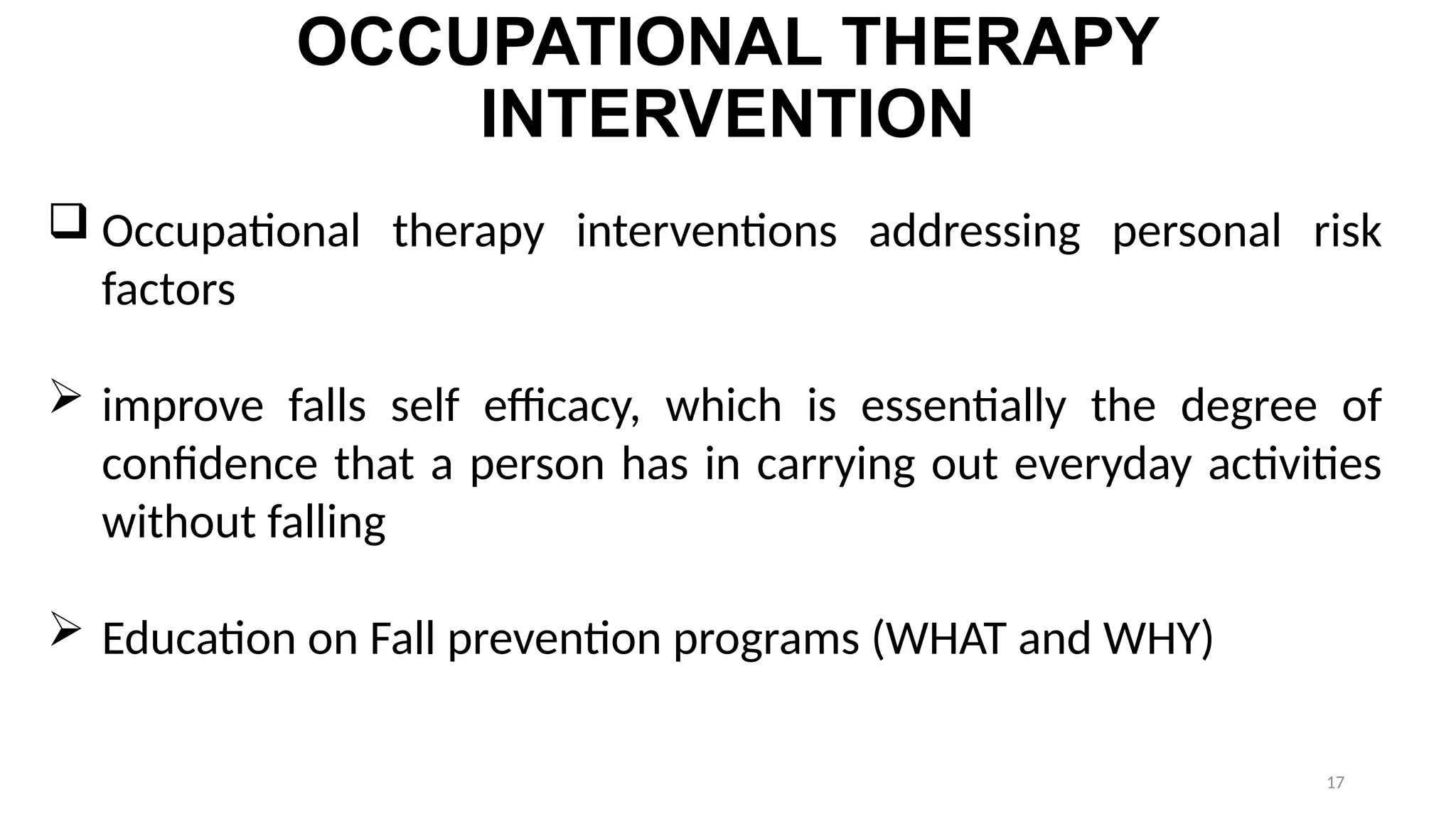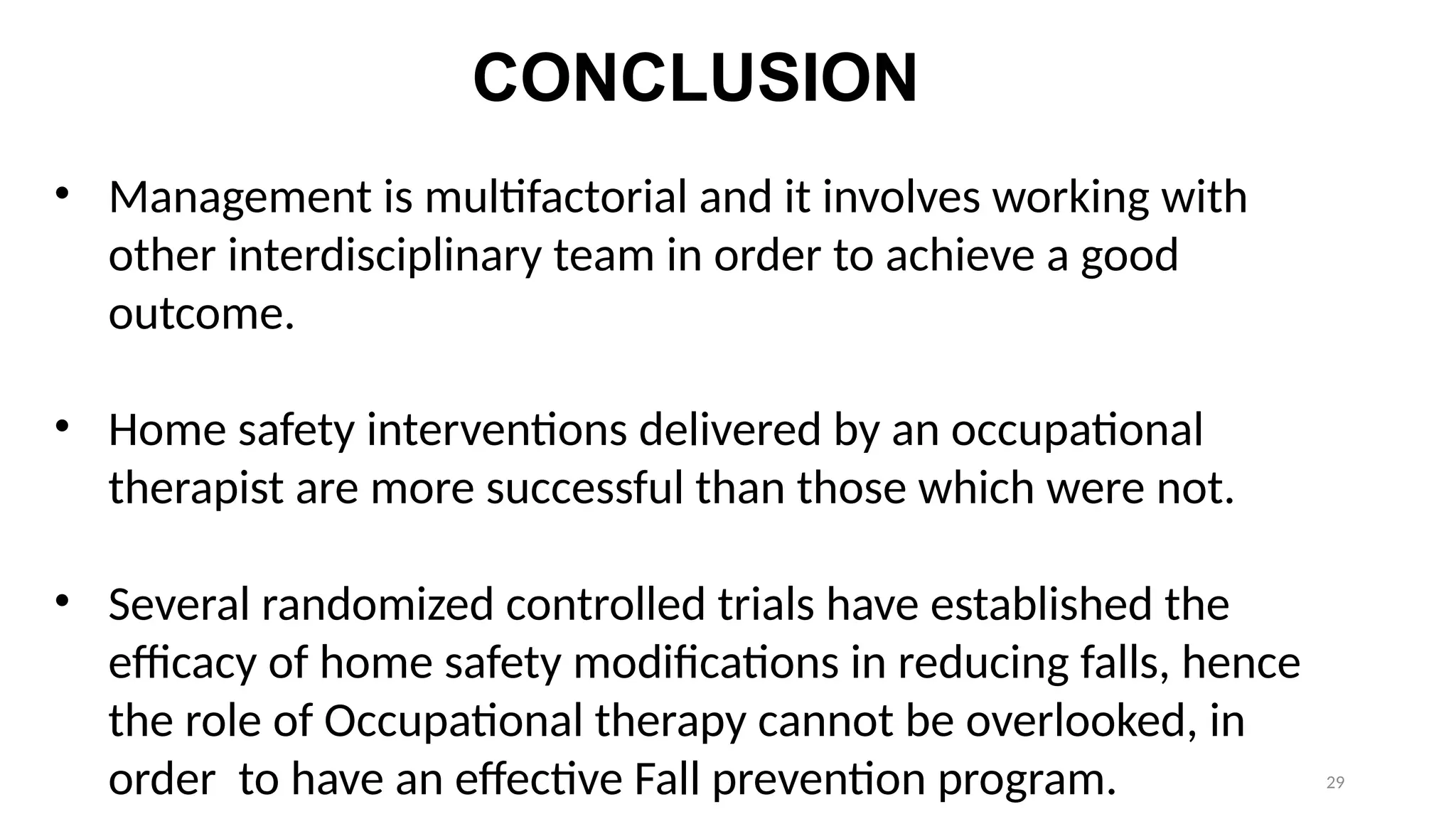Fall prevention involves a multi-faceted approach that includes strengthening muscles, improving balance, modifying the home environment, managing medications, and addressing underlying health conditions. It's particularly important for older adults, but anyone can benefit from proactive steps.































